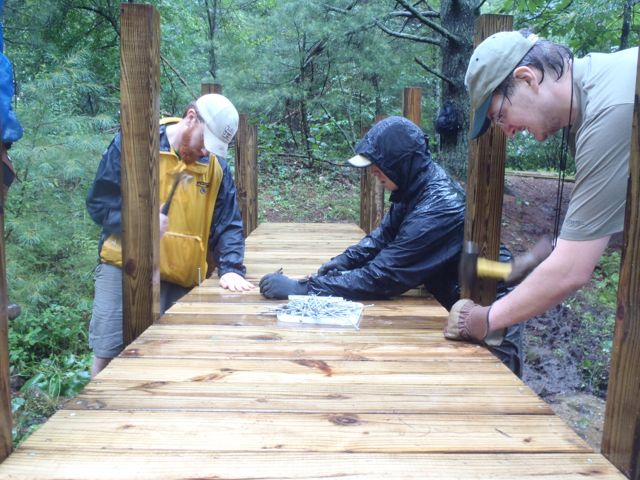I cringed when I picked up the July Outside magazineand saw that it had the Mountains-to-Sea Trail listed under “Best Through-Hikes You’ve Never Heard Of.” No mention was made of the fact that the roughly 1,000-mile MST is only a little over half done, meaning that roughly 500 miles of this best-trail-you’ve-never-heard-of actually is on pavement, often competing with cars. Not exactly the escape most of us seek when we hit the trail.
Which isn’t to disparage the Mountains-to-Sea Trail. Far from it. In these days of financial worry, an economy adrift and overall uncertainty, the MST is a rare constant, continuing to plow across the state. In the Triangle alone, the MST could be complete from Hillsborough to Clayton in two years. But it takes more than trail and the promise of trail-to-come to get me excited. It takes something along the lines of 300 miles of continuous, non-stop, no-reason-to-detour-for-a-bit-along-this-four-lane-divided-highway natural surface trail.
And that’s what we should see on the Mountains-to-Sea Trail come mid-July.
On the weekend of July 16 and 17 — billed as the Big Dig — volunteers will converge near milepost 290.3 on the Blue Ridge Parkway to punch through a five-mile stretch of trail. That link will create an unbroken pathway running 300 miles, from Soco Gap near the Great Smoky Mountains National Park to the visitor center at Stone Mountain State Park. Provided, of course, enough volunteers chip in to make it happen.
“This is a chance to be part of history and leave a legacy for future generations,” says John Lanman, leader of the Friends of the Mountains-to-Sea Trail Watauga Task Force, which is organizing the event. Friends of the Mountains-to-Sea Trail is the nearly all-volunteer non-profit behind the trail’s development.
As I mentioned earlier this month commenting on National Trails Day, it’s hard to find a better workout than working on a trail. Using a rake to clear trail, a mattocks to break up the dirt and rock, a shovel to clear and level the broken up dirt and rock, another rake to clear the remaining debris … (anyone else feel like breaking into “Sixteen Tons”?). Not to mention that feeling of accomplishment you’ll feel sometime Sunday afternoon when east meets west. Think Promontory Point, Utah, 1869.
This 300-mile stretch may be the most scenic portion of the MST, tracing the Blue Ridge Parkway through the likes of the
Middle Prong Wilderness read more

